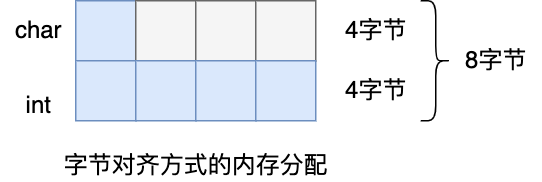SDS实现原理
在 Redis 中,SDS(Simple Dynamic String)是一种用于存储字符串的数据结构,是 Redis 为了解决 C 语言中字符串操作的一些问题而设计的,主要包括以下几个方面:
- 字符串长度计算问题:在 C 语言中,字符串是以 '\0' 结尾的字符数组,获取字符串长度需要遍历整个数组,直到遇到 '\0' 为止,这种方式效率较低。而 SDS 通过记录字符串的长度,能够在 O (1) 的时间复杂度内获取字符串的长度。
- 内存管理问题:C 语言中的字符串操作容易导致内存泄漏和缓冲区溢出等问题。因为 strcat 函数假定程序员在执行这个函数时,已经为 dest 分配了足够多的内存,可以容纳 src 字符串中的所有内容,而一旦这个假定不成立,就会发生缓冲区溢出将可能会造成程序运行终止。SDS 通过动态分配内存,可以自动扩展和收缩字符串的存储空间,避免了这些问题。
- 二进制安全问题:C 语言中的字符串只能存储文本数据,如果存储二进制数据,可能会因为其中的 '\0' 字符被误判为字符串的结束,导致数据丢失。SDS 可以存储任意二进制数据,保证了数据的完整性。
原理及源码
struct __attribute__ ((__packed__)) sdshdr8 {
uint8_t len; /* used */
uint8_t alloc; /* excluding the header and null terminator */
unsigned char flags; /* 3 lsb of type, 5 unused bits */
char buf[];
};
解释如下:
- len,记录了字符串长度
- alloc,分配给字符数组的空间长度。这样在修改字符串的时候,可以通过
alloc - len计算出剩余的空间大小,可以用来判断空间是否满足修改需求,如果不满足的话,就会自动将 SDS 的空间扩展至执行修改所需的大小,然后才执行实际的修改操作,所以使用 SDS 既不需要手动修改 SDS 的空间大小,也不会出现前面所说的缓冲区溢�出的问题。 - flags,用来表示不同类型的 SDS。一共设计了 5 种类型,分别是 sdshdr5、sdshdr8、sdshdr16、sdshdr32 和 sdshdr64
- buf[],字符数组,用来保存实际数据
内存空间设计
Redis 一共设计了 5 种类型,分别是 sdshdr5、sdshdr8、sdshdr16、sdshdr32 和 sdshdr64。
它们数据结构中的 len 和 alloc 成员变量的数据类型不同。
例如:sdshdr16使用uint16_t,表示长度和空间不能超过
/* Note: sdshdr5 is never used, we just access the flags byte directly.
* However is here to document the layout of type 5 SDS strings. */
struct __attribute__ ((__packed__)) sdshdr5 {
unsigned char flags; /* 3 lsb of type, and 5 msb of string length */
char buf[];
};
struct __attribute__ ((__packed__)) sdshdr8 {
uint8_t len; /* used */
uint8_t alloc; /* excluding the header and null terminator */
unsigned char flags; /* 3 lsb of type, 5 unused bits */
char buf[];
};
struct __attribute__ ((__packed__)) sdshdr16 {
uint16_t len; /* used */
uint16_t alloc; /* excluding the header and null terminator */
unsigned char flags; /* 3 lsb of type, 5 unused bits */
char buf[];
};
struct __attribute__ ((__packed__)) sdshdr32 {
uint32_t len; /* used */
uint32_t alloc; /* excluding the header and null terminator */
unsigned char flags; /* 3 lsb of type, 5 unused bits */
char buf[];
};
struct __attribute__ ((__packed__)) sdshdr64 {
uint64_t len; /* used */
uint64_t alloc; /* excluding the header and null terminator */
unsigned char flags; /* 3 lsb of type, 5 unused bits */
char buf[];
};
SDS 设计不同类型的结构体,是为了能灵活保存不同大小的字符串,从而有效节省内存空间。比如,在保存小字符串时,结构头占用空间也比较少。
__attribute__ ((packed)):告诉编译器取消结构体在编译过程中的优化对齐,按照实际占用字节数进行对齐。
编译对齐,例如下面的结构体,实际会使用8个字节,:
struct test1 {
char a;
int b;
} test1;
优点:
- 提高性能:对齐的数据可以提高内存访问的效率,尤其是对于现代计算机体系结构来说,对齐的内存访问通常更快,因为它可以减少内存访问的次数和延迟。
- 兼容性:某些硬件或操作系统可能对数据的对齐有要求,如果数据没有正确对齐,可能会导致运行时错误或性能下降。通过编译对齐,可以确保程序在不同的平台上具有更好的兼容性。
- 简化代码:对齐可以使数据结构在内存中更加规整,从而简化代码的编写和维护。例如,在处理数组或结构体时,对齐可以确保每个元素或成员都按照相同的方式进行访问。
缺点:
- 内存浪费:为了实现对齐,可能会在数据结构中添加一些填充字节,这会导致内存的浪费。特别是在处理小数据结构或数据元素大小不一致的情况时,浪费的内存可能会比较明显。
- 增加编译时间:编译对齐可能需要额外的计算和处理,这可能会增加编译的时间和复杂度。
- 灵活性受限:对齐可能会限制数据结构的布局和设计,使得在某些情况下难以实现最优的内存布局。
SDS扩容
- 如果长度小于最大预分配长度,扩容为两倍
- 否则,每次扩容加上最大预分配长度
/* Enlarge the free space at the end of the sds string so that the caller
* is sure that after calling this function can overwrite up to addlen
* bytes after the end of the string, plus one more byte for nul term.
*
* Note: this does not change the *length* of the sds string as returned
* by sdslen(), but only the free buffer space we have. */
sds sdsMakeRoomFor(sds s, size_t addlen) { // 扩展sds�字符串末尾的空闲空间,以便调用者在调用此函数后可以覆盖字符串末尾后的addlen字节,再加上一个空终止符。
void *sh, *newsh; // 定义两个指针变量sh和newsh
size_t avail = sdsavail(s); // 获取sds字符串的可用空间
size_t len, newlen; // 定义两个变量len和newlen
char type, oldtype = s[-1] & SDS_TYPE_MASK; // 获取sds字符串的类型
int hdrlen; // 定义一个变量hdrlen
/* Return ASAP if there is enough space left. */
if (avail >= addlen) return s; // 如果有足够的空间,立即返回s
len = sdslen(s); // 获取sds字符串的长度
sh = (char*)s-sdsHdrSize(oldtype); // 获取sds字符串的头部指针
newlen = (len+addlen); // 计算新的长度
if (newlen < SDS_MAX_PREALLOC) // 如果新的长度小于最大预分配长度
newlen *= 2; // 将新的长度乘以2
else
newlen += SDS_MAX_PREALLOC; // 否则,将新的长度加上最大预分配长度
type = sdsReqType(newlen); // 获取新的sds字符串类型
/* Don't use type 5: the user is appending to the string and type 5 is
* not able to remember empty space, so sdsMakeRoomFor() must be called
* at every appending operation. */
if (type == SDS_TYPE_5) type = SDS_TYPE_8; // 如果类型是5,将其改为8
hdrlen = sdsHdrSize(type); // 获取新的头部长度
if (oldtype==type) { // 如果旧类型和新类型相同
newsh = s_realloc(sh, hdrlen+newlen+1); // 重新分配内存
if (newsh == NULL) { // 如果分配失败
s_free(sh); // 释放旧内存
return NULL; // 返回NULL
}
s = (char*)newsh+hdrlen; // 更新s指针
} else { // 如果旧类型和新类型不同
/* Since the header size changes, need to move the string forward,
* and can't use realloc */
newsh = s_malloc(hdrlen+newlen+1); // 分配新的内存
if (newsh == NULL) return NULL; // 如果分配失败,返回NULL
memcpy((char*)newsh+hdrlen, s, len+1); // 复制旧数据到新内存
s_free(sh); // 释放旧内存
s = (char*)newsh+hdrlen; // 更新s指针
s[-1] = type; // 更新类型
sdssetlen(s, len); // 设置sds字符串长度
}
sdssetalloc(s, newlen); // 设置sds字符串的分配长度
return s; // 返回s
}
